Air Operations, Carolines - 19 XIII Bomber Command B-24s attack the Sorol and Yap atolls.
- B-24s attack the airfields on Peleliu and Woleai while conducting armed-reconnaissance flights.
[  | |   ] ]
Air Operations, CBI
BURMA
- More than 80 10th Air Force fighter-bombers attack Mytikyina.
- 7 fighter-bombers attack Loilaw, Pyindaw, and Waingmaw.
CHINA
- 14 341st Medium Bombt Group B-25s attack Hankow.
- 14th Air Force bombers and fighter-bombers complete more than 180 sorties in the Tungting Lake region.
- 14 22nd Medium Bomb Squadron B-25s and 36 14th Air Force P-40s support Chinese Army ground forces on the Salween River front with attacks against Tengchung and Lungling, targets of opportunity between Tengchung and Lungling, and bridges at Mangshih and Tingka.
- Japanese bombers attack the airfield at Lingling, where 1 P-51 is destroyed on the ground.
- 23rd and 51st Fighter group P-40s and P-51s based at the Lingling and Kwelin airfields down 3 Ki-43 'Oscar' fighters in a large morning engagement over Lingling and Hengyang.
- A 5th CACW Fighter Group P-40 downs an 'Oscar; in an engagement near Changsha at 1525 hours. 1 USAAF P-40 is lost.
- Japanese Army ground forces advancing toward the French Indochina border from the Tungting Lake region seize the 14th Air Force’s forward airfield at Hengyang—the first 14th Air Force base to fall into Japanese hands. This loss is despite the best efforts of the 23rd Fighter Group, which has flown 538 effective ground-attack sorties against the Japanese Army force since June 17. Despite the loss of the outlying airfield, however, the strategically vital city of Hengyang, which sits astride the Hankow-Hanoi rail line, will hold out until Japanese Army ground forces abandon the offensive on July 2.
INDIA
- More than 30 10th Air Force B-25s airlift ammunition to Imphal.
[  | |   ] ]
Air Operations, Europe US aircraft, taking off in Russia, bomb the oil installations at Drogobych (Drohobycz) and go on to Italy. Yak fighters escort the American planes to the targets.
RAF BOMBER COMMAND
Daylight Ops:
- 2 Mosquitos make uneventful Ranger patrols.
Evening Ops:
- 35 Mosquitos of No. 8 Group attack Göttingen with the intention of hitting railway workshops. The raid is carried out from medium altitude - 4,000 to 10,000ft - but the marker aircraft experience difficulties in locating the target and bombing is scattered. 1 Mosquito is lost. This may have been an experimental raid, to try out the No. 8 Group Mosquitos in a precision bombing role, but this type of operation is not repeated.
- 8 Halifaxes of No. 6 Group lay mines off French ports without a loss.
US 8th AIR FORCE
POLAND:
- 72 B-17s and 103 P-51s comprising the 8th Air Force FRANTIC force leave the Soviet Union for USAAF bases in Italy. Along the way, they bomb the oil plant at Drohobycz, Poland. The 8th Air Force formation is met along the withdrawal route by 15th Air Force escort fighters.
US 12th AIR FORCE
ITALY:
- 12th Air Force bombers and most fighter-bombers are grounded by bad weather. Some XII TAC fighter-bombers manage to attack several rail and tactical targets near the Gothic Line.
US 15th AIR FORCE
AUSTRIA:
- 677 15th Air Force B-17s and B-24s, escorted by 260 fighters, attack five of the seven oil refineries and an oil depot in the Vienna area.
- 30 heavy bombers are downed by more that 150 Axis fighters during the target pentration phase.
- 82nd Fighter Group P-38 pilots down 13 of the Axis fighters, mostly twin-engine Messerschmitts, over Bratislava, Czechoslovakia.
[  | |   ] ]
Air Operations, Japan 12 28th Composite Bomb Group B-25s cover a US surface force that bombards installations at Kurabu Cape in the Kurile Islands.
[  | |   ] ]
Air Operations, Marianas - 318th Fighter Group P-47s attack Japanese Army positions on Saipan and Tinian.
- A VF-27 F6F downs a Ki-61 'Tony' fighter at sea at 1710 hours.
- At 2318 hours, a Japanese Navy torpedo bomber collides with the boom of a cargo ship and disintegrates. While the torpedo falls into the superstructure but fails to detonate, 11 men aboard the ship are injured.
- During the night, Japanese bombers strike the VMO-2 squadron area on Saipan with anti-personnel mines that lightly wound several Marines but cause negligible material damage. Nevertheless, bomb strikes in the VMO-4 sector kill 3 and wound 9 members of the squadron. Also, Japanese Army ground troops armed with Molotov cocktails attack and destroy a 318th Fighter Group P-47 on the ground at Isely Field (formerly Aslito airfield) on Saipan.
[  | |   ] ]
Air Operations, New Guinea - V Bomber Command B-24s, V Fighter Command P-39s, US Navy bombers, and RAAF aircraft attack the Wewak area through the day.
- B-24s, B-25s, A-20s, A-26s and fighter-bombers attack targets in the Schouten Islands throughout the day.
[  | |   ] ]
Atlantic The British battleship HMS Rodney bombards the German forces in the Caen sector.
[  | |   ] ]
Battle of the Atlantic Early in the day a U-boat is reported 50 miles to the northwest of Blacksod Bay. 2 British ships are sent to search the area, the destroyer Bulldog and the frigate Awe. After a couple of hours the Bulldog is in asdic contact of U-719 and delivers 3 Hedgehog attacks. The third attack produces a number of explosions after which the contact is lost. It was about 3 hours later that oil began to well up on the surface.
U-317|
| Class | Type VIIC |
| CO |
Kapitänleutnant Klaus-Dietrich Steffens |
| Location |
Atlantic, NW of Bloody Foreland |
| Cause |
Depth charge |
| Casualties |
52 |
| Survivors |
None |
[  | |   ] ]
CBI
BURMA
In the NCAC area, Brig-Gen Theodore F. Wessels, USA, takes command of the Myitkyina TF, replacing Gen Boatner who has malaria. Magaung falls to the 114th Regiment of the Chinese 38th Division and the 77th Brigade, Indian 3rd Division. The 77th Brigade is withdrawn from action by its commander soon afterward on grounds of exhaustion despite orders from Gen Stilwell, who has operational control of the unit, for it to prevent the Japanese from reinforcing Myitkyina. The fall fo Magaung permits the Chinese to link up with the Myitkyina TF, which thus far has been isolated from other friendly forces in Burma.
On the Salween front, the offensive against Teng-chung is begun with air attacks by B-25s from Yun-nan-i.
CHINA
Japanese troops take the Heng-yang airfield, a major American base north of Canton in Hunan province. The Japanese 11th Army is temporarily halted by the Chinese 10th Army. B-25s and P-47s make constant air attacks on the Japanese supply lines.
Vice President Henry Wallace sends his report to President Roosevelt from Chungking shortly before departing China. Completely convinced that Gen Stilwell is the problem, after hours of conversation with Generalissimo Chiang Kai-shek, he recommends that Gen Stilwell be recalled. He offers Gen Albert Wedemeyer as a possible replacement.
[  | |   ] ]
Eastern Front The Russian forces burst into Vitebsk after a heavy bombing raid by 700 aircraft. 6,000 German bodies are found in the streets. 80,000 Germans are captured. Vitebsk is one of the most famous of the 'hedgehog' strongpoints which Hitler has ordered to be defended at all costs in order to avoid the fall of Minsk to the west. Stalin orders salvos from Moscow's 224 guns to mark the first major victory of the summer offensive.
To the south near Rogachev they take the railroad town of Zhlobin.
CENTRAL SECTOR
Amid scenes of carnage, the Soviet 39th Army captures Vitebsk, wiping out mosr to the LIII Corps. As the German 4th Army falls back in tatters to the Dnieper, the 5th Guards Tank Army is committed to battle, advancing to Tolochin and capturing the town. Orsha falls to the 11th Guards and 31sth Armies as the 49th Army crosses the Dnieper. Hitler agrees to the withdrawal of the 4th Army to the Berezina, which is taking place anyway. In the south the 9th Army falls apart, with XXXV Corps encircled at Bobruisk. Hitler dismisses the army commander, Hans Jordan, and then refuses the army group commander, Busch, to pull back his forces.[MORE]
[  | |   ] ]
Italy In the Tyrrhenian sector the 34th Div of the IV Corps, replacing the 36th Div, advances across the Cecina River. The French Expeditionary Corps, having crossed the Orcia at the cost of heavy losses, advances on Siena. In the center of the Allied line the South African 6th Arm Div enters Chiusi.
[  | |   ] ]
Kurile Islands A US naval squadron commanded by Rear-Adm E. G. Small bombards Paramushiro Island.
[  | |   ] ]
Marianas A small reinforcement convoy of Japanese lighters carrying troops from Tanapag harbor on the west coast heading south is met and turned away by American amphibian craft. One lighter is sunk and the Japanese effort is thwarted. In the interior of the island the 2nd Marine Div takes an important position north of Mount Tipo Pale. The 27th Inf Div is still held up in 'Death Valley', and the 4th Marine Div, on the American right, is mopping up the Kagman peninsula. In the south the 105th Inf Regt comes nearer to Point Nafutan, repulsing a night counterattack by the Japanese.
[  | |   ] ]
New Guinea On Biak, mopping up west of Mokmer begins. The 1st Battalion of the 34th Infanty (less Company C, which is ambushed en route) seizes the abandoned positions on the ridge extending north from the northwest corner of the Teardrop.
In the Wakde-Sarmi area, the 3rd Battalion of the 63rd Infantry replaces the battle-worn 2nd and 3rd Battalions, 20th Infantry, on Lone Tree Hill.
[  | |   ] ]
Norwegian Sea Liberator 'N' of No 86 Squadron makes two attacks on a surfaced U-boat (U-317). In the second attack, three depth charges explode alongside the starboard side of the submarine. She rolls over to port and begins to sink.
U-317|
| Class | Type VIIC |
| CO |
Oberleutnant zur See Peter Rahlff |
| Location |
Norwegian Sea, NE of Shetlands |
| Cause |
Air attack |
| Casualties |
50 |
| Survivors |
None |
[  | |  ] ]
Pacific The British submarine Truculent attacks a Japanese convoy about 60 miles southeast of Medan, Sumatra and sinks the cargo ship Harugiku Maru (3040t).
[  | |   ] ]
Western Front Most of Cherbourg, except the docks area, is taken by the US VII Corps. The advance units of the 9th Div from the west is halted before the dockyard. Meanwhile the 39th Regt reaches Octeville and the outer suburb of St Sauveur-le-Vicomte, where 1,000 Germans are taken prisoner, including the garrison commander, Gen Karl von Schlieben and the local naval chief, Adm Walter Hennecke. Hennecke has had the harbor completely destroyed so that the Allies will not be able to use it - a gesture for which Hitler decorates him with a knighthood of the Iron Cross. But the battle is not over.[WF]
The battleship Rodney and the monitor Roberts along with 3 cruisers give heavy gunfire support to the British forces attacking near Caen.[CAEN]
[  | |   ] ]
Images from June 26, 1944
Waiting to Advance
|
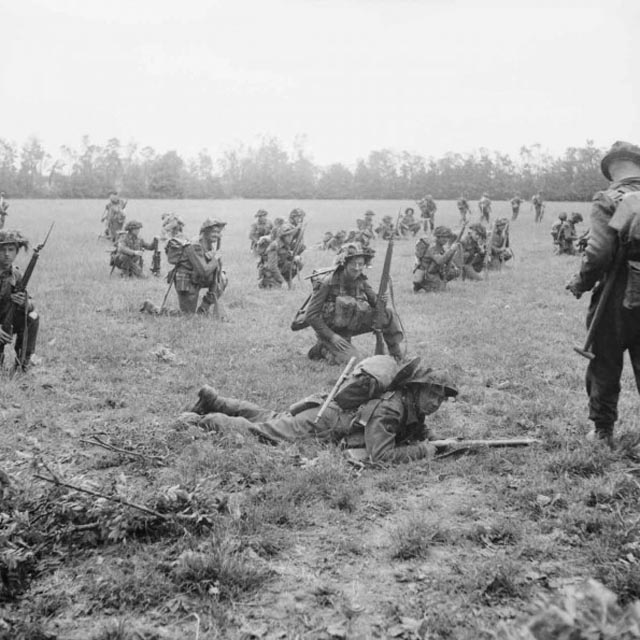 |
|
Preparing to Advance
|
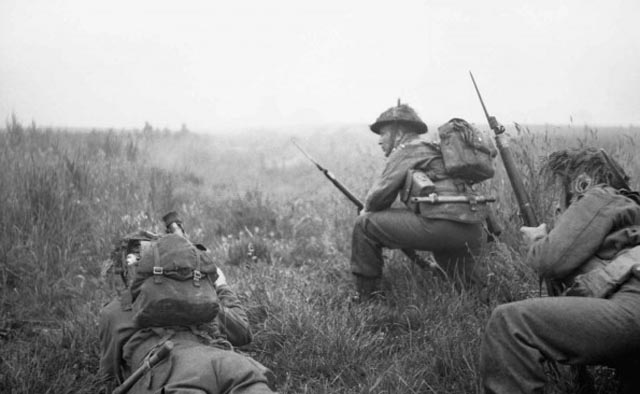 |
|
Advancing, Led by Their Piper
|
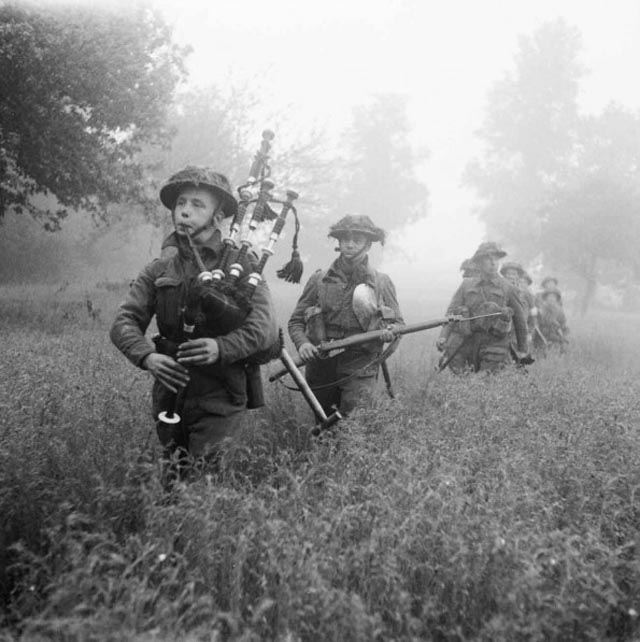 |
|
Advancing Through Mist and Smoke
|
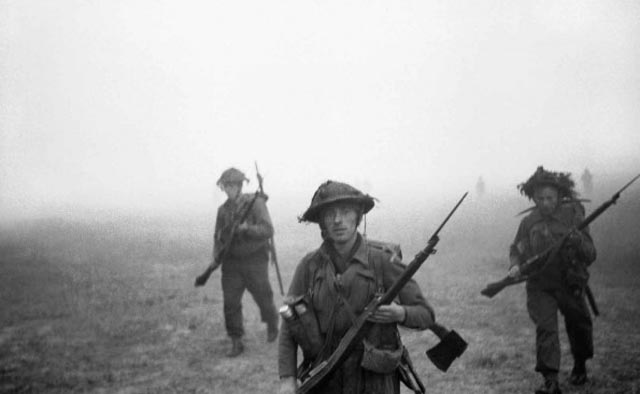 |
|
In the Village of St Mauvieu-Norrey
|
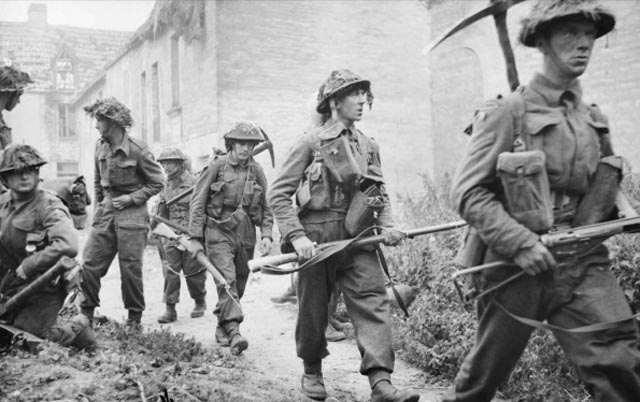 |
|
Advancing into St Manvieu
|
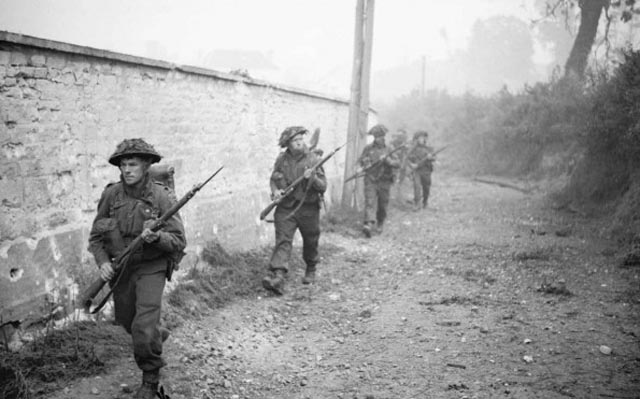 |
|
Taking Cover in St Manvieu
|
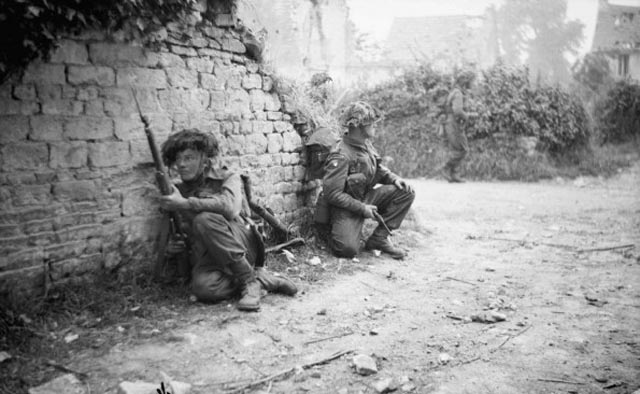 |
|
Advance Through Waist-high Corn Behind a Churchill Tank
|
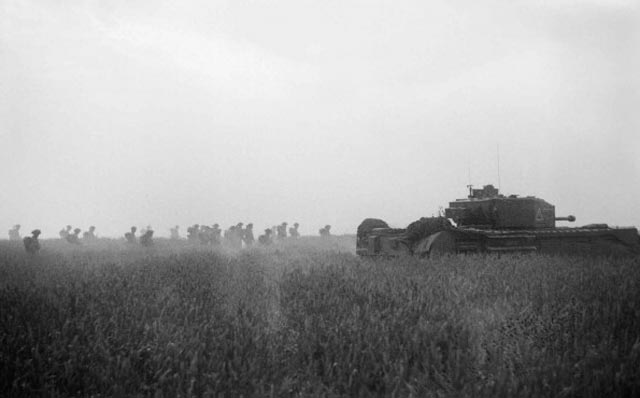 |
|
Firing from Their Positions in a Sunken Lane
|
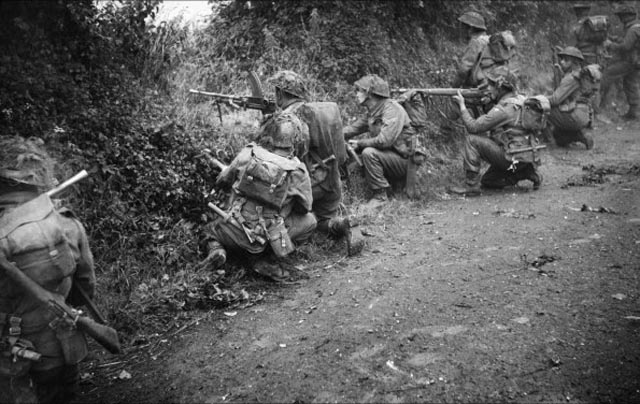 |
|
Cherbourg Commander Gen Karl-Wilhelm von Schlieben
|
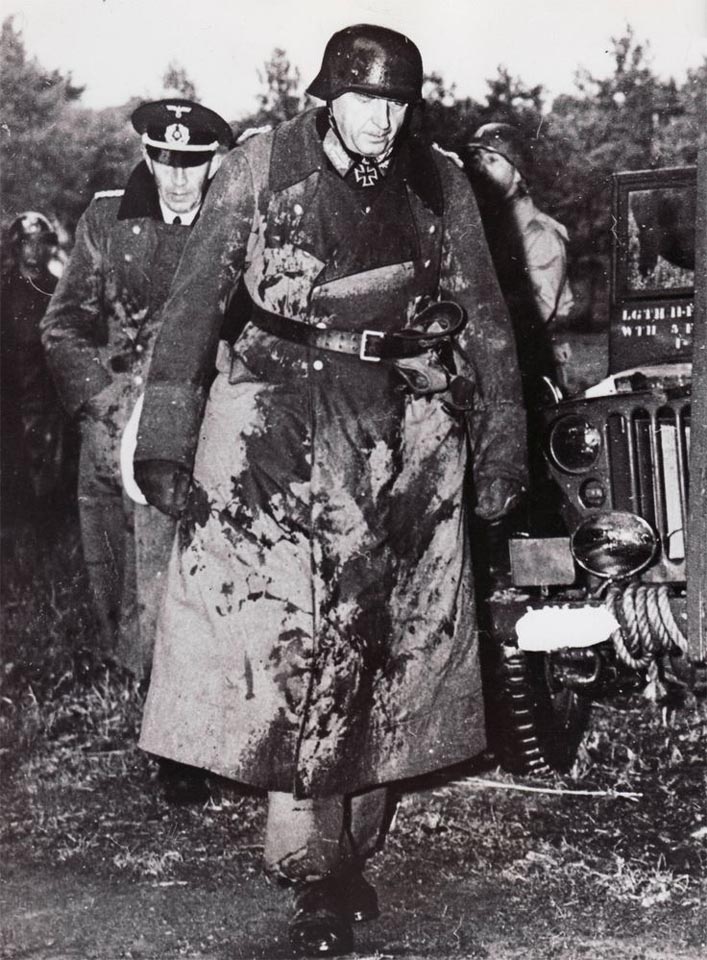 |
|
Ammunition Carrier of the 11th Armored Division Explodes
|
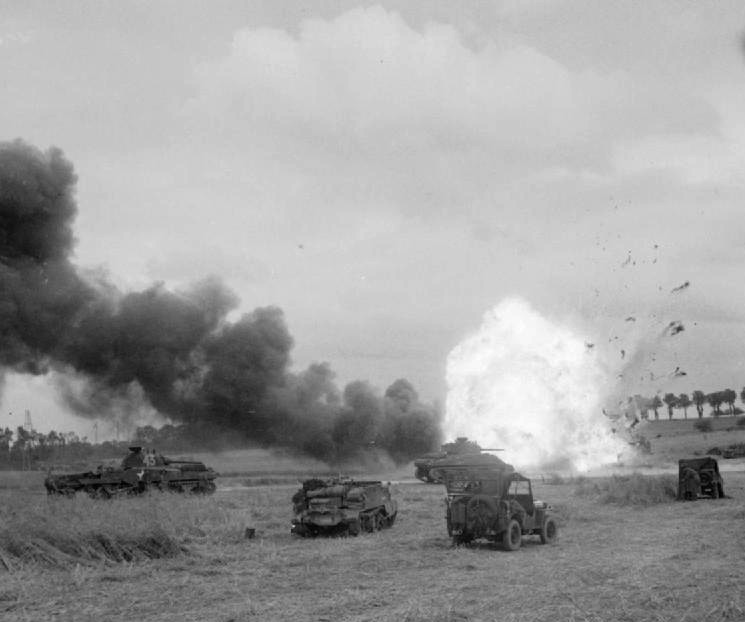 |
|
Awaiting the Signal to Advance
|
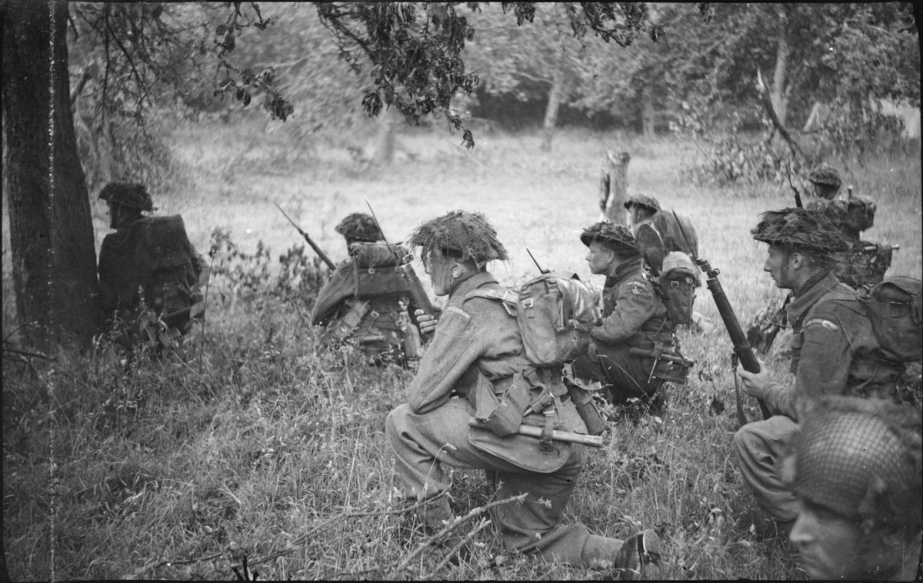 |
|
British Garrison of a QF 6pdr
|
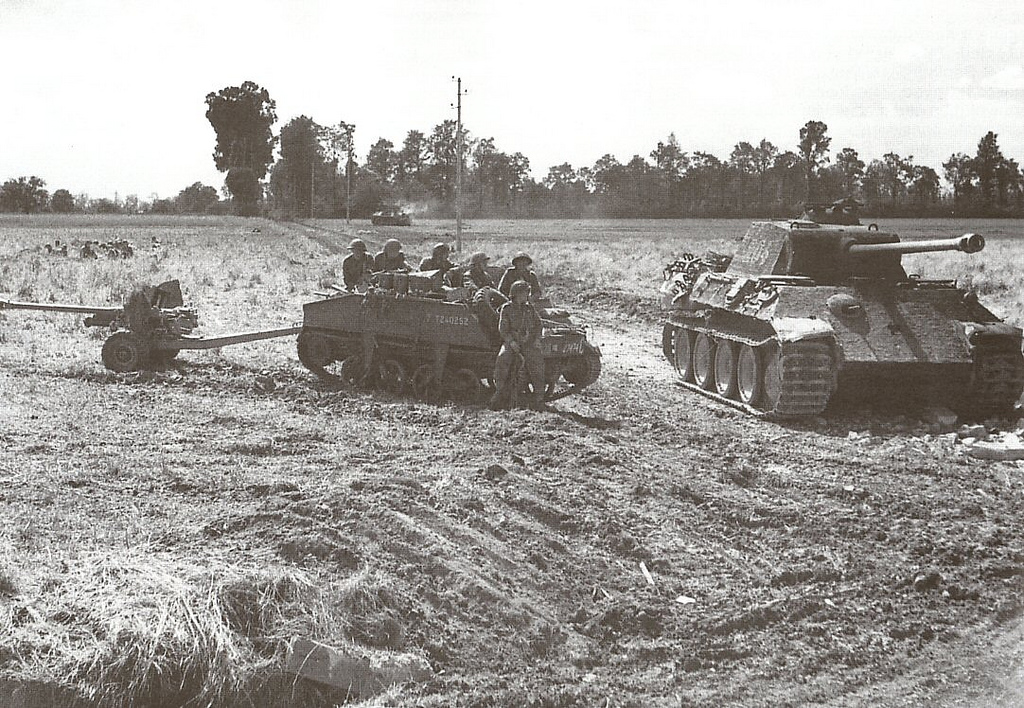 |
|
Young SS Officer Captured by VIII Corps
|
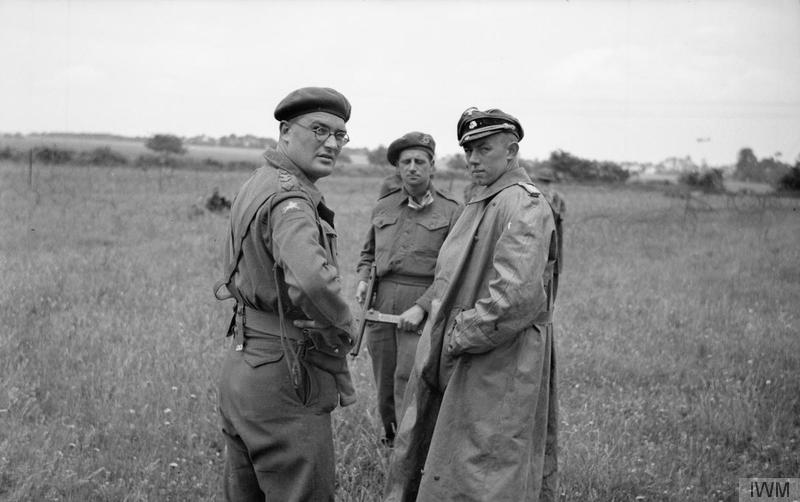 |
|
Soldiers of the 6th Battalion Scots Fusiliers
|
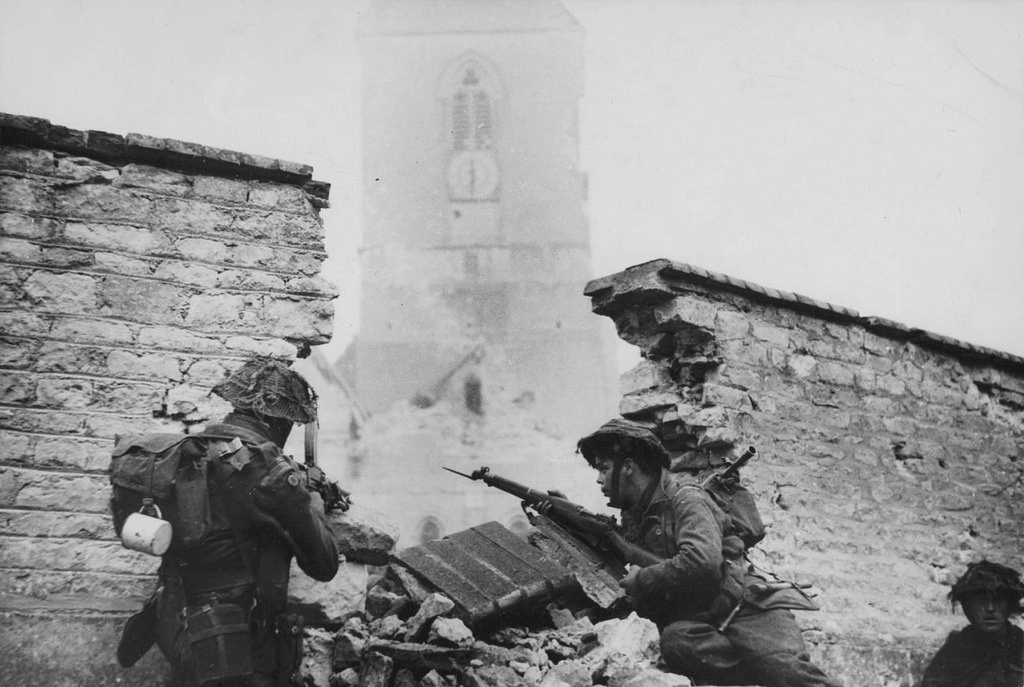 |
|
US Troops Look on at a Fallen Wehrmacht Soldier
|
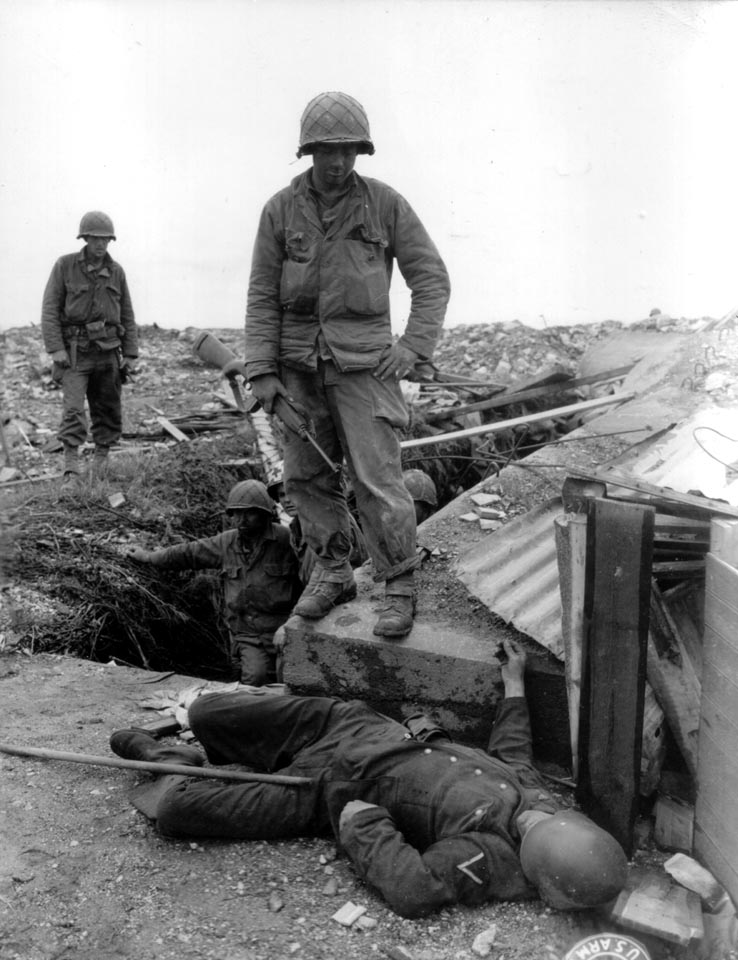 |
|
|















